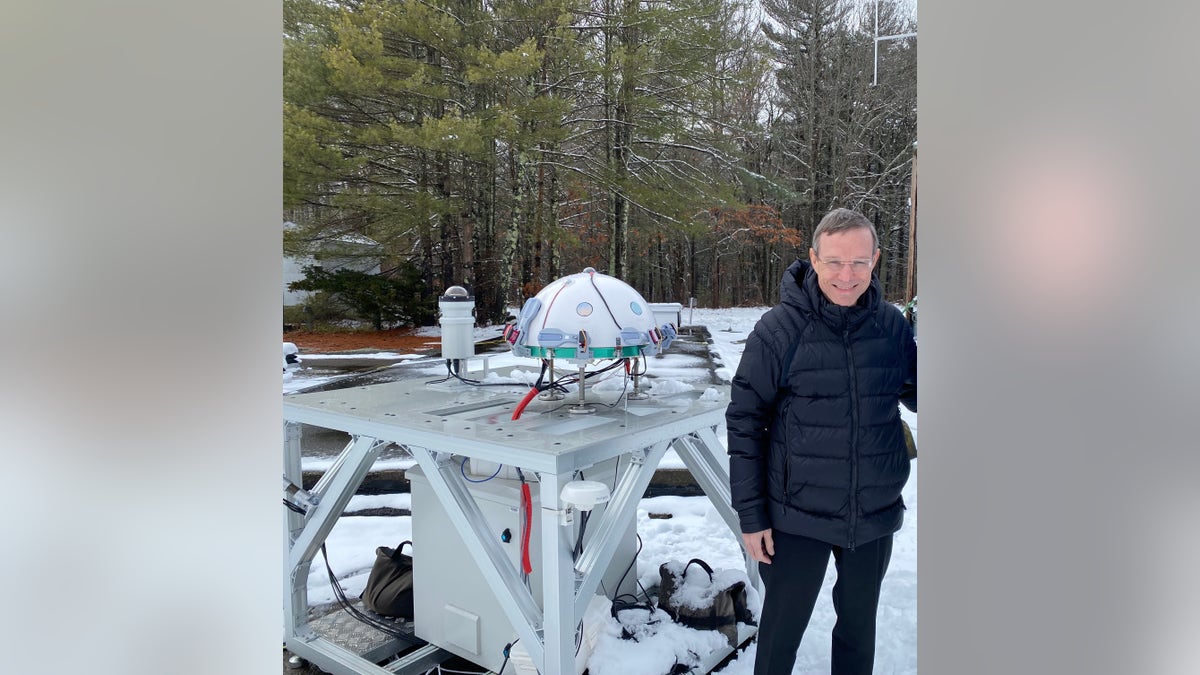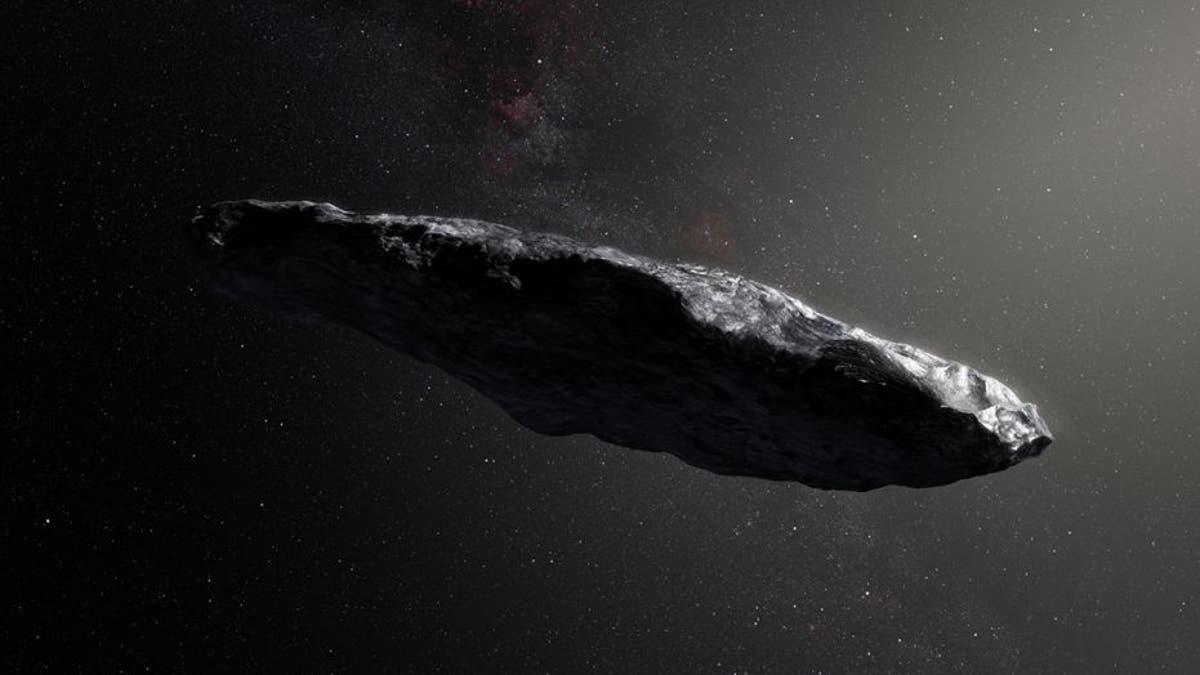Search for UFOs leads Harvard Professor Avi Loeb off the coast of Papua New Guinea
Harvard Professor Avi Loeb, who started the Galileo Project, talks about his "fishing expedition" to find a potential alien artifact and discusses the importance of sharing information between the government and scientific community.
A "runaway fireball" that crashed into the water off the coast of Papua New Guinea in 2014 could be an alien probe or extraterrestrial artifact similar to U.S. interstellar probes like NASA's "Voyagers," Harvard professor Dr. Avi Loeb told Fox News Digital.
That would be strong potential evidence of alien life.
The space object crashed into the Bismarck Sea with a percentage of the energy force of the Hiroshima bomb in 2014 and likely traveled "from the deep interior of a planetary system or a star in the thick disk of the Milky Way galaxy," Loeb said.
It was originally classified as a meteor, but the object's speed and trajectory were "outliers" that suggested it wasn't beholden to the sun's orbit, according to the Harvard professor, who authored a paper about the object with his student Dr. Amir Siraj.
PENTAGON OFFICIALS SUGGEST ALIEN MOTHERSHIP IN OUR SOLAR SYSTEM COULD SEND MINI PROBES TO EARTH

Harvard Professor Avi Loeb, of the Galileo Project, stands with the infrared and optical cameras of the Galileo Project Observatory (Avi Loeb)
Space Force's Space Operations Command officially confirmed its findings to NASA, which was released on April 6, 2022.
Since then, Loeb raised $1.5 million to fund a 10-day "fishing expedition" to recover pieces of the object off the ocean floor to study it.
‘MOSUL ORB’: US SILENT ON UFO FILMED BY MILITARY OVER IRAQ
"From a scientific point of view, it only takes one object that came from an extraterrestrial technological civilization to change the future humanity," Loeb told Fox News Digital during an interview in late March. "That's why we want to know what all the objects are."
What he and his team will see on their voyage to Papua New Guinea is unknown, but he said he expects to find a "strip of fragments" on the ocean floor along the original path, with the smallest fragments at the beginning.

Harvard Professor Avi Loeb speaking at the annual conference ni Zurich, Switzerland in March (WORLD.MINDS)
Loeb predicts that they'll see "about a thousand fragments bigger than a millimeter, whereas for a stainless-steel composition we expect larger sizes, with tens of fragments bigger than a centimeter," according to a scientific research paper.
The trip was originally planned for the end of May, but he told Fox News Digital on Saturday that it was bumped back to the summer.
"We built the machinery to scoop the ocean floor, which is about a mile deep," Loeb said. "If the fragments are magnetic, we will use magnets to collect them and separate them from the muck. If the objects aren't magnetic, we have a plan b."
Loeb was front and center after the discovery of "Oumuamua," which was a long, cigar-like object that flew past Earth back in 2017.
LOEB TALKS ABOUT THE EXPEDITION
Before the discovery of the object that crashed off Papua New Guinea, "Oumuamua" was considered the first interstellar object, and Loeb believed it was a "a light sail of artificial origin" sent from another civilization.
He argued his theory in a scientific paper, which became a controversial take on the discovery.
MYSTERIOUS INTERSTELLAR OBJECT 'OUMUAMUA GETS NEW ORIGIN STORY
Other studies have suggested that other "Oumuamua-like objects" will potentially enter our solar system, with some potentially carrying life.
"The likelihood of Galactic panspermia is strongly dependent upon the survival lifetime of the putative organisms as well as the velocity of the transporter," according to a paper published in The Astronomical Journal by Manasvi Lingam and Loeb.

An artist's depiction of Oumuamua, the first detected interstellar object. (M. Kornmesser/ESO)
During Loeb's interview with Fox News Digital, which was done shortly after the Chinese spy balloon was shot down along with other three unknown aerial objects over the course of eight days, pushed the government to declassify raw data or share information with the scientific community to make so more discoveries like these two interstellar objects can be made.
It can work out for both communities, he argued.
"The sky is not classified. It's only the censors that the government is using that are classified, as a result the government doesn't release the highest quality data," Loeb said.
"As far we are concerned (in the scientific community), if we find human-made objects, we are happy to hand over the data to the government because it's of little interest to us."

Harvard Professor Avi Loeb (center) with Rolf Dobelli (left) and Kiper Blakeley (right) (Rolf Dobelli)
On the flip side, he believes the government isn't "particularly interested" in objects or meteors from space, and it can be a mutually beneficial arrangement that will allow scientists to make more discoveries like "Oumuamua" or the object off Papua New Guinea.
Loeb referred to a January Department of Defense report that categorized 366 reports UFOs since March 202.
The report classified 26 cases as unmanned aircraft or drones,163 cases were balloons or "balloon-like entities" and six reports could be attributed to birds, debris such as plastic bags or weather events.
But about half of the new cases could not be explained and "appear to have demonstrated unusual flight characteristics or performance capabilities, and require further analysis," according to the report.
WATCH FOX NEWS SEGMENT ON THE DOD REPORT
\CLICK HERE TO GET THE FOX NEWS APP
"We expect these reports to be a mixed bag," Loeb said. But "an encounter with a superior extraterrestrial technology would offer humanity the opportunity to acquire new scientific knowledge that goes beyond what we learned over the past century.
"It would also provide us with a glimpse of our own technological future, offering a quantum leap if we are wise enough to import its innovative content into our terrestrial life."




